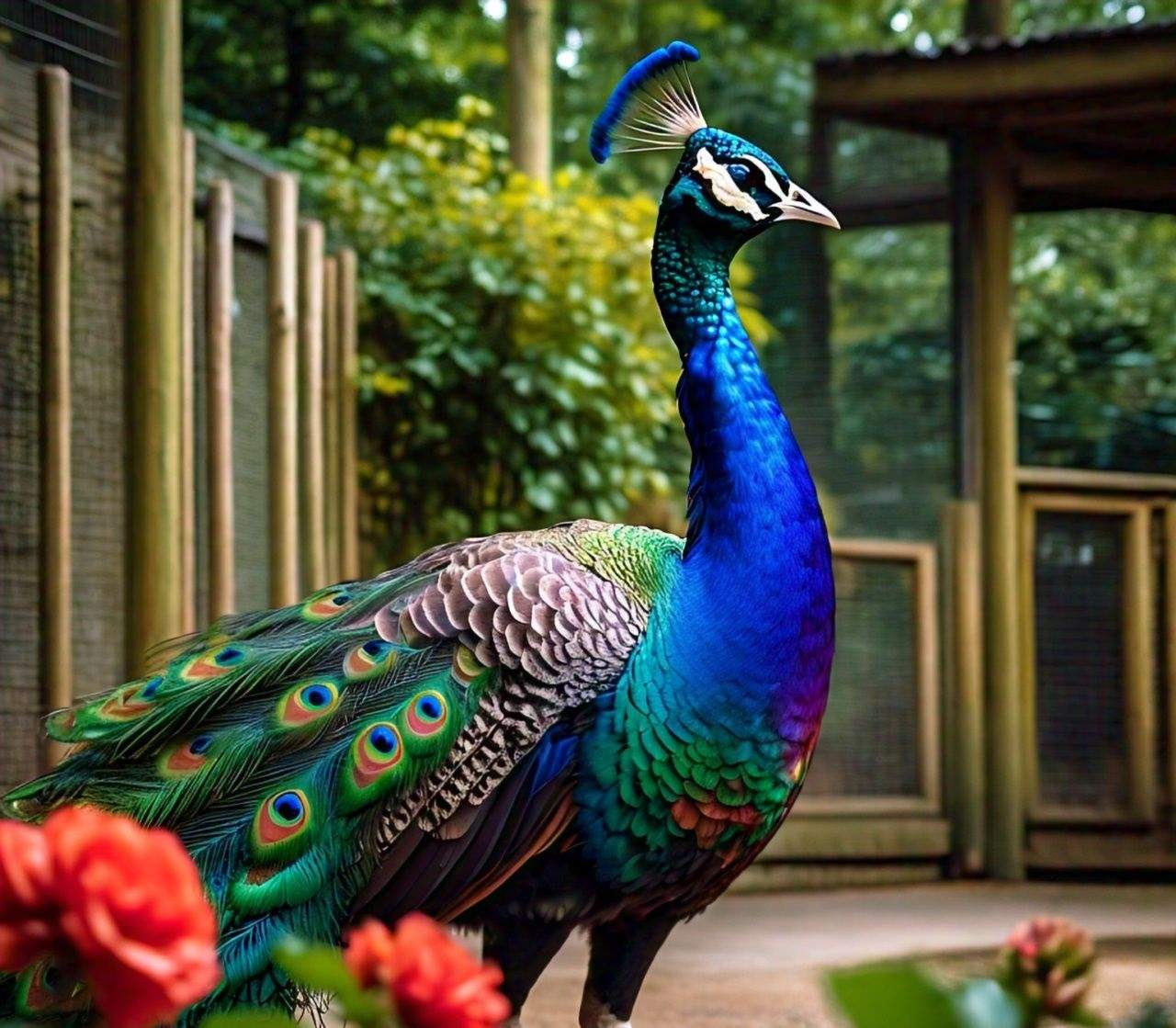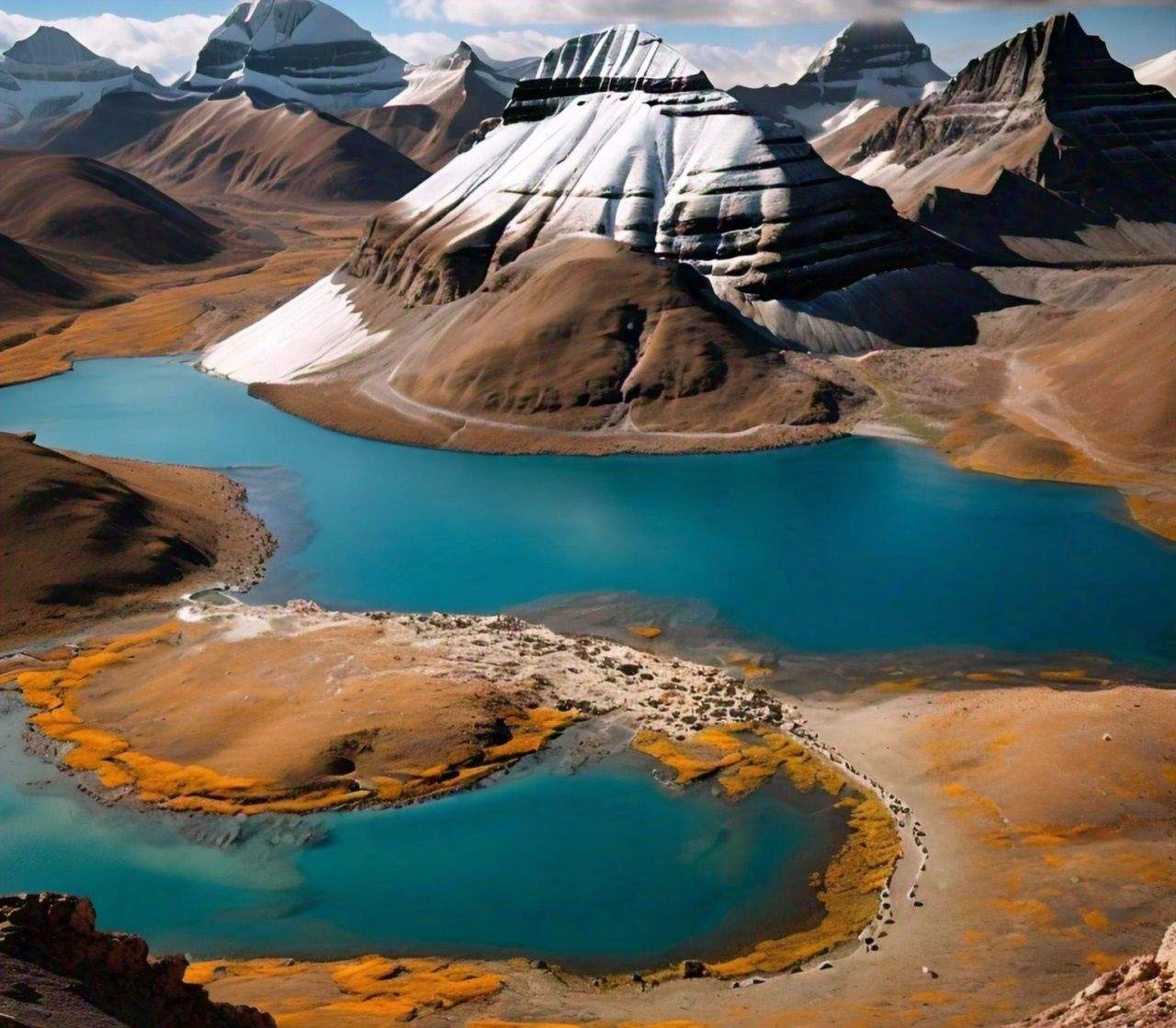
Mount Kailash is a mountain in the Kailash Range of the Transhimalaya, in the western part of the Tibetan Plateau. It is located in the Ngari Prefecture, Tibet Autonomous Region of China, north of the western trijunction of the border between China, India and Nepal. The peak of Mount Kailash is located at an elevation of 6,638 m (21,778 ft). Read more: https://www.lonelyplanet.com/articles/trekking-mount-kailash-one-of-the-worlds-greatest-overland-trips
The mountain is known as “Kailāsa” in Sanskrit, and “Gang Rinpoche” in Tibetan, which means “precious jewel of snows”. Mount Kailash is considered sacred in Hinduism, Buddhism, Jainism and Bon religion. People from India, China, Nepal and other countries undertake pilgrimage to the mountain.
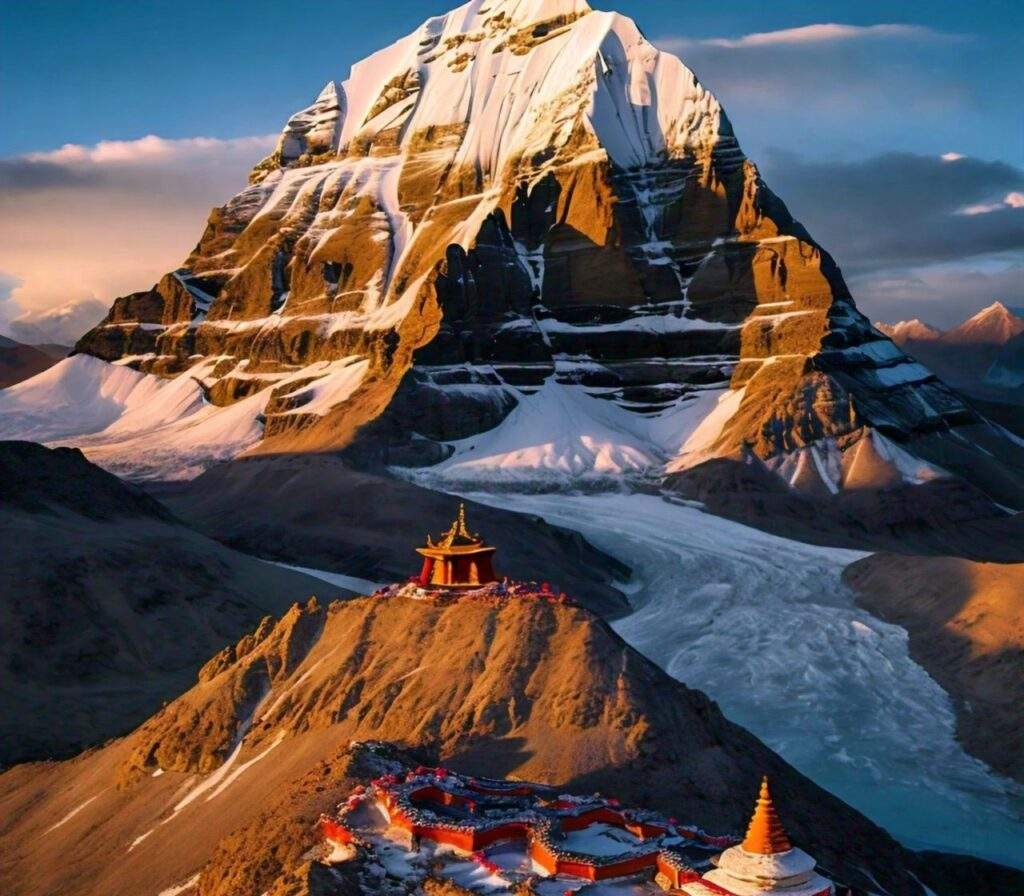
The region around Mount Kailash is typified by wide-scale faulting of metamorphosed late-Cretaceous to mid-Cenozoic sedimentary rocks which have been intruded by igneous Cenozoic granitic rocks. Mount Kailash appears to be a metasedimentary roof pendant supported by a massive granite base.
Climate change due to global warming is described as happening three times faster on the Tibetan Plateau than anywhere else in the world. According to local observers, the land around Mount Kailash has been growing warmer in recent years with winters not as cold as it used to be.
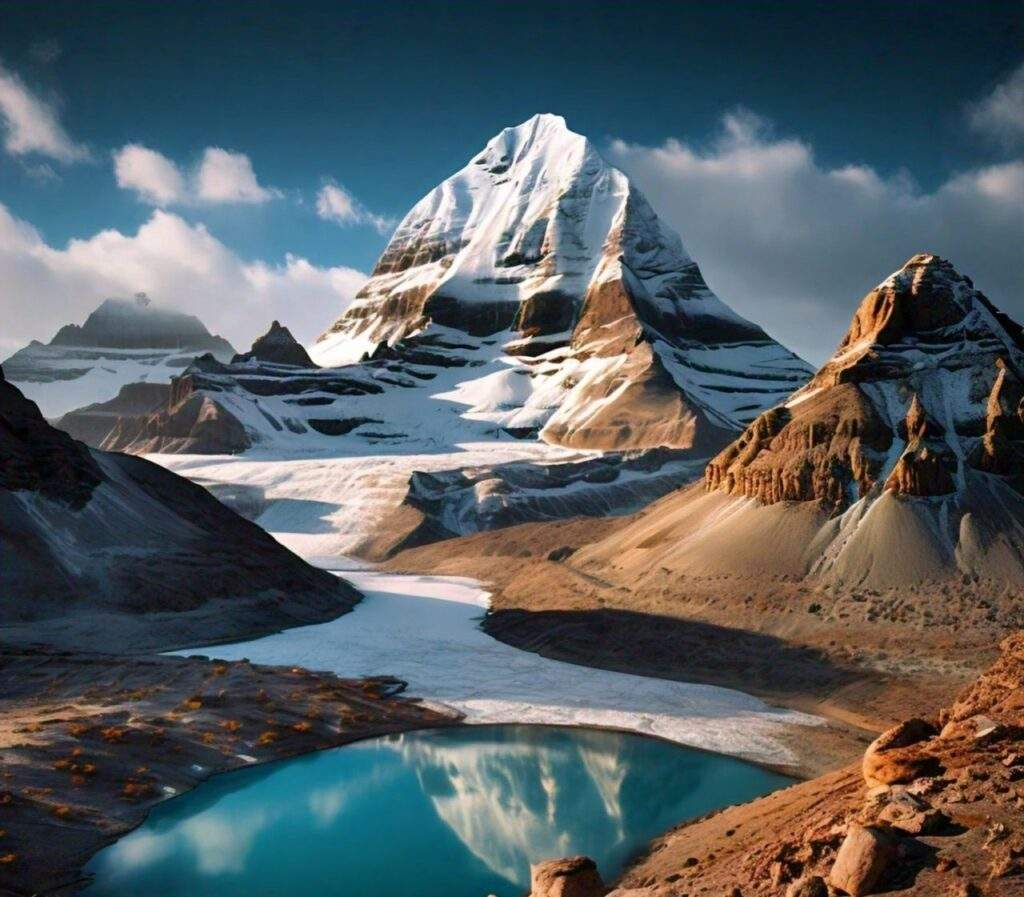
The intergovernmental organisation ICIMOD is involved in ongoing efforts to generate knowledge on the ecological, social, and economic effects of climate change, and sustainable ways to cope with them, in the Chinese region around Mount Kailash and the bordering areas of Uttarakhand in India and western Nepal, in a transboundary project called the Kailash Sacred Landscape Conservation and Development Initiative.
Mount Kailash is located close to Manasarovar and Rakshastal lakes. The sources of four rivers: Indus, Sutlej, Brahmaputra, and Karnali lie in the vicinity of the region. The major rivers rising from the western Gangdise mountains are the Yarlung Tsangpo (which becomes the Brahmaputra), the Indus, the Sutlej and the Karnali, a tributary of Ganges.
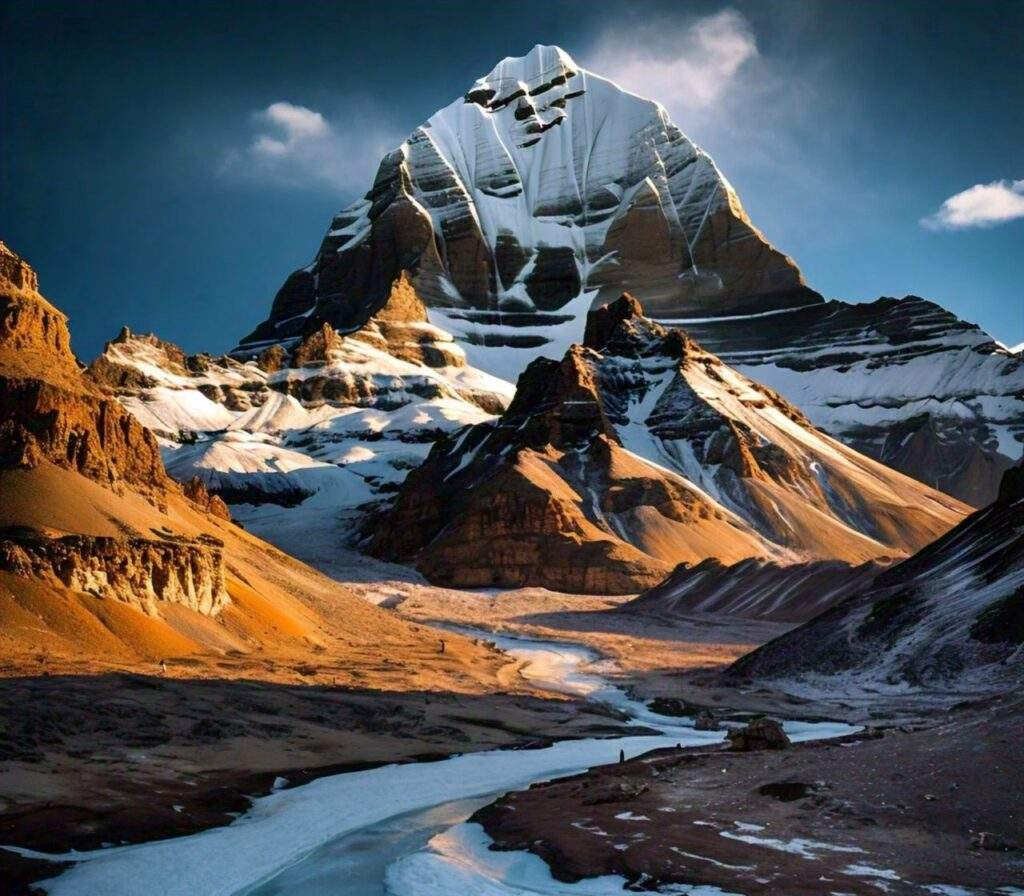
In Hinduism, the mountain is traditionally recognized as the abode of Shiva, who resides there along with his consort goddess Parvati and their children, Ganesha and Kartikeya. Hindus believe Kailash to be the Mount Meru which is considered to be a stairway to heaven where the Svarga devas reside.
In Jainism, the first Jain Tirthankara, Rishabhanatha attained moksha (liberation) on Mount Kailash. In Jain tradition, it is believed that after Rishabhanatha attained nirvana, his son emperor Bharata had constructed three stupas and twenty four shrines of the 24 tirthankaras in the region with their idols studded with precious stones and named it Sinhnishdha.
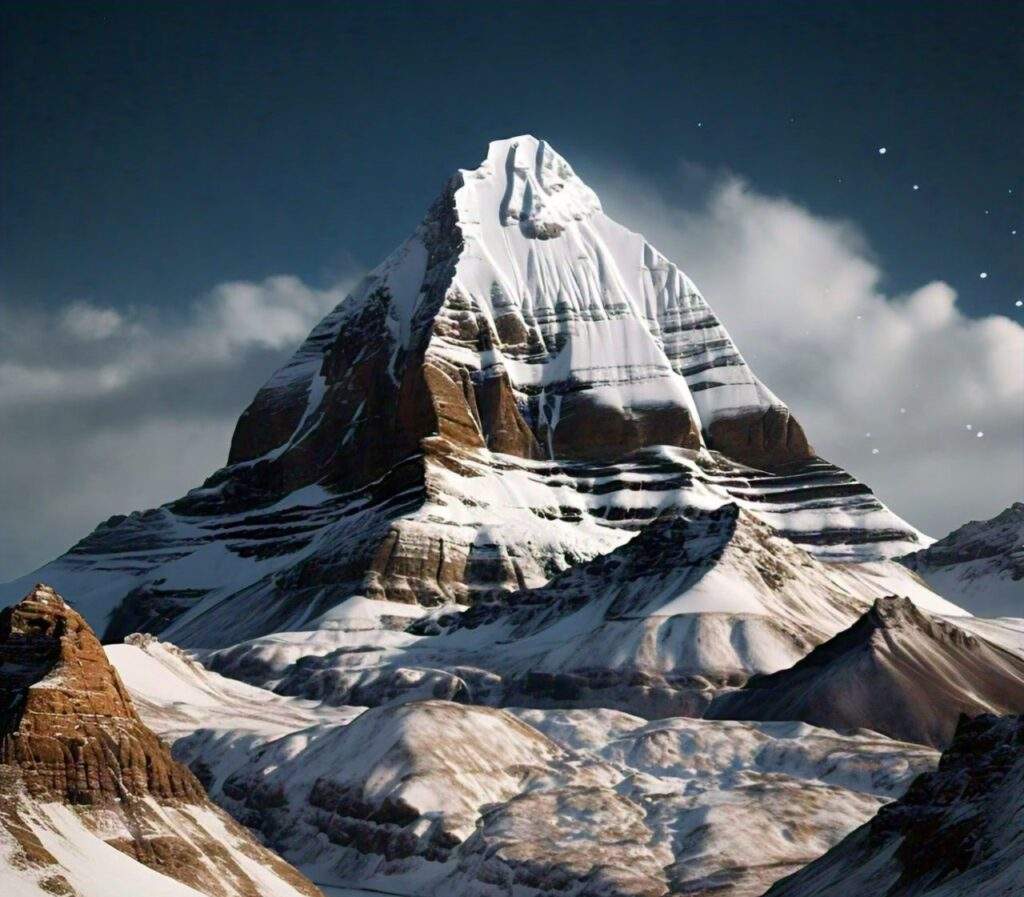
In Buddhism, Mount Kailash (Kailasa) is known as the mythological Mount Meru. Kailash is central to its cosmology, and a major pilgrimage site for some Buddhist traditions. Numerous sites in the region are associated with Padmasambhava, whose tantric practices in holy sites around Tibet are credited with finally establishing Buddhism as the main religion of the country in the 7th–8th century CE.
The pilgrimage involves trekking towards Lake Mansarovar and a circumambulation of Mount Kailash. The path around Mount Kailash is 53 km (33 mi) long. Pilgrims believe that doing a circumambulation of Mount Kailash on foot is a spiritually beneficial practice that can bring various positive effects, such as the collection of meritorious karma, the cleansing of sins from one’s consciousness, and good fortune. The circumambulation is made in a clockwise direction by Hindus, Buddhists, and Jains, while Bönpos circumambulate the mountain in a counterclockwise direction. The circumambulation usually begins and ends at Darchen, a small outpost located at an elevation of 4,670 m (15,320 ft). The highest point on the pilgrimage is the Drölma pass situated at 5,650 m (18,540 ft).
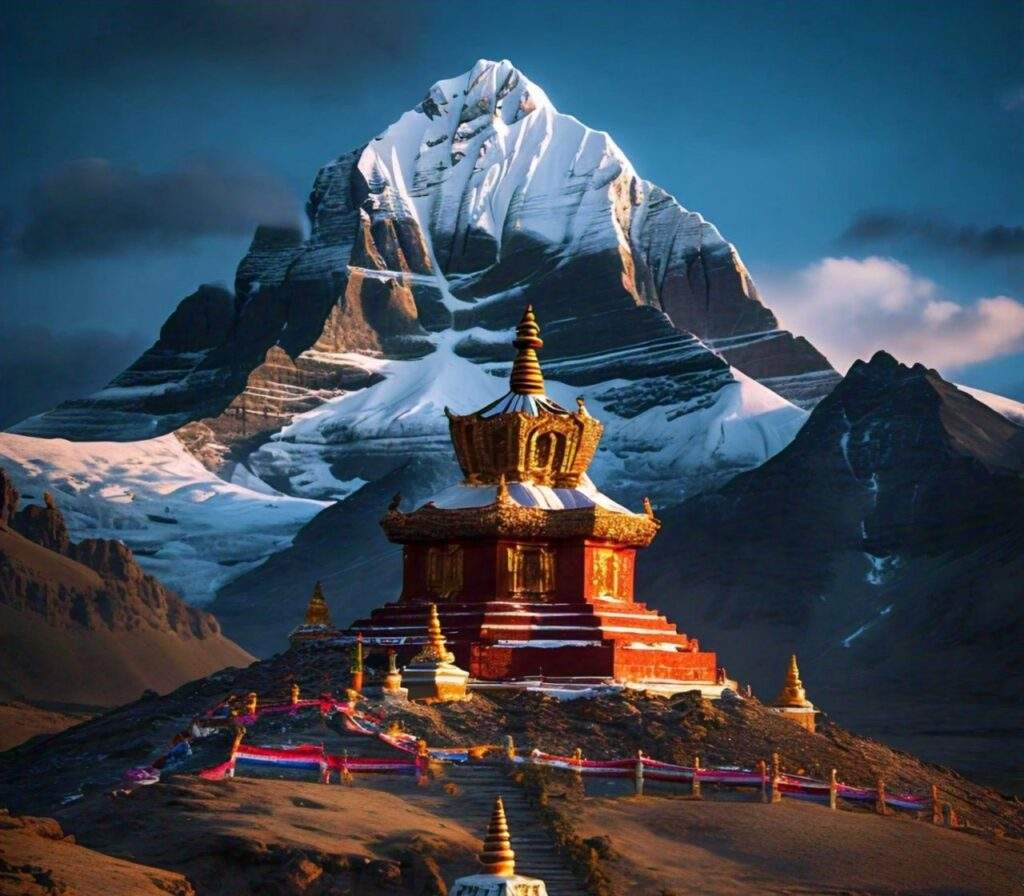
Walking around the mountain can be done on foot or using a pony or domestic yak and takes three days on average with night camps at Dirapuk gompa, about 2 to 3 km (1.2 to 1.9 mi) before the Drölma pass. Read more: https://en.wikipedia.org/wiki/Mount_Kailash







